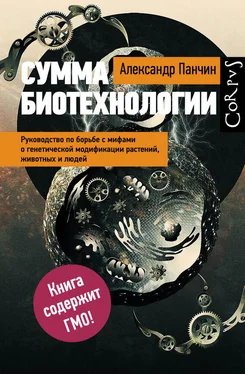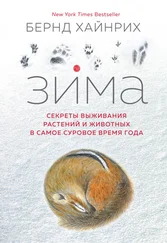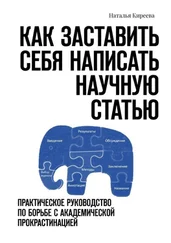397. Meng L. et al.: Rhesus monkeys produced by nuclear transfer. Biol Reprod 1997, 57(2):454–9.
398. Cozzi J. et al.: Procedures for somatic cell nuclear transfer in the rat. Methods Mol Biol 2010, 597:137–50.
399. Wakayama S. et al.: Production of cloned mice from somatic cells, ES cells, and frozen bodies. Methods Enzymol 2010, 476:151–69.
400. Arat S. et al.: 22 semen and reproductive profiles of cloned anatolian grey cattle. Reprod Fertil Dev 2014, 27(1):103–4.
401. Woods G.L et al.: A mule cloned from fetal cells by nuclear transfer. Science 2003, 301(5636):1063.
402. Galli C. et al.: Somatic cell nuclear transfer in horses. Reprod Domest Anim 2008, 43 Suppl 2:331–7.
403. Shin T. et al.: A cat cloned by nuclear transplantation. Nature 2002, 415(6874):859.
404. Lee B.C. et al.: Dogs cloned from adult somatic cells. Nature 2005, 436(7051):641.
405. Loi P. et al.: Genetic rescue of an endangered mammal by crossspecies nuclear transfer using post-mortem somatic cells. Nat Biotechnol 2001, 19(10):962–4.
406. Vanderwall D.K. et al.: Equine cloning: applications and
outcomes. Reprod Fertil Dev 2006, 18(1–2):91–8.
407. Wakayama S. et al.: Successful serial recloning in the mouse over multiple generations. Cell Stem Cell 2013, 12(3):293–7.
408. French A.J. et al.: Development of human cloned blastocysts following somatic cell nuclear transfer with adult fibroblasts. Stem Cells 2008, 26(2):485–93.
409. Unno N. et al.: Development of an artificial placenta: survival of isolated goat fetuses for three weeks with umbilical arteriovenous extracorporeal membrane oxygenation. Artif Organs 1993, 17(12):996–1003.
410. Kfoury C.: Therapeutic cloning: promises and issues. Mcgill J Med 2007, 10(2):112–20.
411. Nayernia K. et al.: In vitro-differentiated embryonic stem cells give rise to male gametes that can generate offspring mice. Dev Cell 2006, 11(1):125–32.
412. Easley C.A. et al.: Gamete derivation from embryonic stem cells, induced pluripotent stem cells or somatic cell nuclear transfer-derived embryonic stem cells: state of the art. Reprod Fertil Dev 2014, 27(1):89–92.
413. Denton P.W., Garcia J.V.: Novel humanized murine models for HIV research. Curr HIV/AIDS Rep 2009, 6(1):13–9.
414. Espuny-Camacho I. et al.: Pyramidal neurons derived from human pluripotent stem cells integrate efficiently into mouse brain circuits in vivo. Neuron 2013, 77(3):440–56.
415. Strom S.C. et al.: Chimeric mice with humanized liver: tools for the study of drug metabolism, excretion, and toxicity. Methods Mol Biol 2010, 640:491–509.
416. Han X. et al.: Forebrain engraftment by human glial progenitor cells enhances synaptic plasticity and learning in adult mice. Cell Stem Cell 2013, 12(3):342–53.
417. Schwitzgebel E.: Do ethicists steal more books? Philosophical Psychology 2009, 22(6):711–25.
418. Olovnikov A.M.: Telomeres, telomerase, and aging: origin of the theory. Exp Gerontol 1996, 31(4):443–8.
419. Betts D. et al.: Reprogramming of telomerase activity and rebuilding of telomere length in cloned cattle. Proc Natl Acad Sci USA 2001, 98(3):1077–82.
420. Poss K.D. et al.: Heart regeneration in zebrafish. Science 2002, 298(5601):2188–90.
421. Engel F.B. et al.: FGF1/p38 MAP kinase inhibitor therapy induces cardiomyocyte mitosis, reduces scarring, and rescues function after myocardial infarction. Proc Natl Acad Sci USA 2006, 103(42):15546–51.
422. Bedelbaeva K. et al.: Lack of p21 expression links cell cycle control and appendage regeneration in mice. Proc Natl Acad Sci USA 2010, 107(13):5845–50.
423. Murphy S.V., Atala A.: 3D bioprinting of tissues and organs. Nat Biotechnol 2014, 32(8):773–85.
424. Ventola C.L.: Medical Applications for 3D Printing: Current and Projected Uses. P T 2014, 39(10):704–11.
425. Buffenstein R.: Negligible senescence in the longest living rodent, the naked mole-rat: insights from a successfully aging species. J Comp Physiol B 2008, 178(4):439–45.
426. Kim E.B. et al.: Genome sequencing reveals insights into physiology and longevity of the naked mole rat. Nature 2011, 479(7372):223–7.
427. Seluanov A. et al.: Hypersensitivity to contact inhibition provides a clue to cancer resistance of naked mole-rat. Proc Natl Acad Sci USA 2009, 106(46):19352–7.
428. McCay C.M. et al.: The effect of retarded growth upon the length of life span and upon the ultimate body size. 1935. Nutrition 1989, 5(3):155–71; discussion 72.
429. Szafranski K., Mekhail K.: The fine line between lifespan extension and shortening in response to caloric restriction. Nucleus 2014, 5(1):56–65.
430. Mattison J.A. et al.: Impact of caloric restriction on health and survival in rhesus monkeys from the NIA study. Nature 2012, 489(7415):318–21.
431. Carey J.R. et al.: Life history response of Mediterranean fruit flies to dietary restriction. Aging cell 2002, 1(2):140–8.
432. Kasumovic M.M. et al.: Body condition but not dietary restriction prolongs lifespan in a semelparous capital breeder. Biology letters 2009, 5(5):636–8.
433. Cooper T.M. et al.: Effect of caloric restriction on life span of the housefly, Musca domestica. FASEB journal: official publication of the Federation of American Societies for Experimental Biology 2004, 18(13):1591–3.
434. Cava E., Fontana L.: Will calorie restriction work in humans? Aging (Albany NY) 2013, 5(7):507–14.
435. Madeo F. et al.: Can autophagy promote longevity? Nature cell biology 2010, 12(9):842–6.
436. Eisenberg T. et al.: Induction of autophagy by spermidine promotes longevity. Nature cell biology 2009, 11(11):1305–14.
437. Morselli E. et al.: Caloric restriction and resveratrol promote longevity through the Sirtuin-1-dependent induction of autophagy. Cell death & disease 2010, 1:e10.
438. Hansen M. et al.: A role for autophagy in the extension of lifespan by dietary restriction in C. elegans. PLoS genetics 2008, 4(2):e24.
439. Jia K., Levine B.: Autophagy is required for dietary restriction-mediated life span extension in C. elegans. Autophagy 2007, 3(6):597–9.
440. Lum J.J. et al.: Autophagy in metazoans: cell survival in the land of plenty. Nature reviews Molecular cell biology 2005, 6(6):439–48.
441. Ravikumar B. et al.: Inhibition of mTOR induces autophagy and reduces toxicity of polyglutamine expansions in fly and mouse models of Huntington disease. Nature genetics 2004, 36(6):585–95.
442. Beauchamp E.M., Platanias L.C.: The evolution of the TOR pathway and its role in cancer. Oncogene 2013, 32(34):3923–32.
443. Saiki S. et al.: Caffeine induces apoptosis by enhancement of autophagy via PI3K/Akt/mTOR/p70S6K inhibition. Autophagy 2011, 7(2):176–87.
444. Zhou H. et al.: Updates of mTOR inhibitors. Anti-cancer agents in medicinal chemistry 2010, 10(7):571–81.
445. Dowling R.J. et al.: Metformin inhibits mammalian target of rapamycin-dependent translation initiation in breast cancer cells. Cancer Res 2007, 67(22):10804–12.
446. Chin R.M. et al.: The metabolite alpha-ketoglutarate extends lifespan by inhibiting ATP synthase and TOR. Nature 2014.
447. Leontieva O.V. et al.: Weekly administration of rapamycin improves survival and biomarkers in obese male mice on high-fat diet. Aging cell 2014.
448. Fok W.C. et al.: Mice fed rapamycin have an increase in life span associated with major changes in the liver transcriptome. PLOS ONE 2014, 9(1):e83988.
449. Miller R.A. et al.: Rapamycin-mediated lifespan increase in mice is dose and sex dependent and metabolically distinct from dietary restriction. Aging Cell 2014, 13(3):468–77.
450. Harrison D.E. et al.: Rapamycin fed late in life extends lifespan in genetically heterogeneous mice. Nature 2009, 460(7253):392–5.
Читать дальше
Конец ознакомительного отрывка
Купить книгу




![Александр Панчин - Гарвардский Некромант [litres]](/books/390749/aleksandr-panchin-garvardskij-nekromant-litres-thumb.webp)


![Александр Панчин - Апофения [litres]](/books/435337/aleksandr-panchin-apofeniya-litres-thumb.webp)




